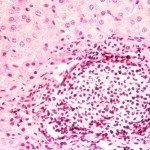Lien vers Pubmed [PMID] – 39882189
Lien DOI – 10.2903/j.efsa.2025.9191
EFSA J 2025 Jan; 23(1): e9191
A risk assessment framework was developed to evaluate the zoonotic potential of avian influenza (AI), focusing on virus mutations linked to phenotypic traits related to mammalian adaptation identified in the literature. Virus sequences were screened for the presence of these mutations and their geographical, temporal and subtype-specific trends. Spillover events to mammals (including humans) and human seroprevalence studies were also reviewed. Thirty-four mutations associated with five phenotypic traits (increased receptor specificity, haemagglutinin stability, neuraminidase specificity, enhanced polymerase activity and evasion of innate immunity) were shortlisted. AI viruses (AIVs) carrying multiple adaptive mutations and traits belonged to both low and highly pathogenic subtypes, mainly to A(H9N2), A(H7N9), A(H5N6) and A(H3N8), were sporadic and primarily detected in Asia. In the EU/EEA, H5Nx viruses of clade 2.3.4.4b, which have increased opportunities for evolution due to widespread circulation in birds and occasional cases/outbreaks in mammals, have acquired the highest number of zoonotic traits. Adaptive traits, such as enhanced polymerase activity and immune evasion, were frequently acquired, while receptor-specific mutations remained rare. Globally, human cases remain rare, with the majority overall due to A(H5N1), A(H5N6), A(H7N9) and A(H9N2) that are among the subtypes that tend to have a higher number of adaptive traits. The main drivers of mammalian adaptation include virus and host characteristics, and external factors increasing AIV exposure of mammals and humans to wild and domestic birds (e.g. human activities and ecological factors). Comprehensive surveillance of AIVs targeting adaptive mutations with whole genome sequencing in animals and humans is essential for early detection of zoonotic AIVs and efficient implementation of control measures. All preparedness, preventive and control measures must be implemented under a One Health framework and tailored to the setting and the epidemiological situation; in particular, enhanced monitoring, biosecurity, genomic surveillance and global collaboration are critical for mitigating the zoonotic risks of AIV.


